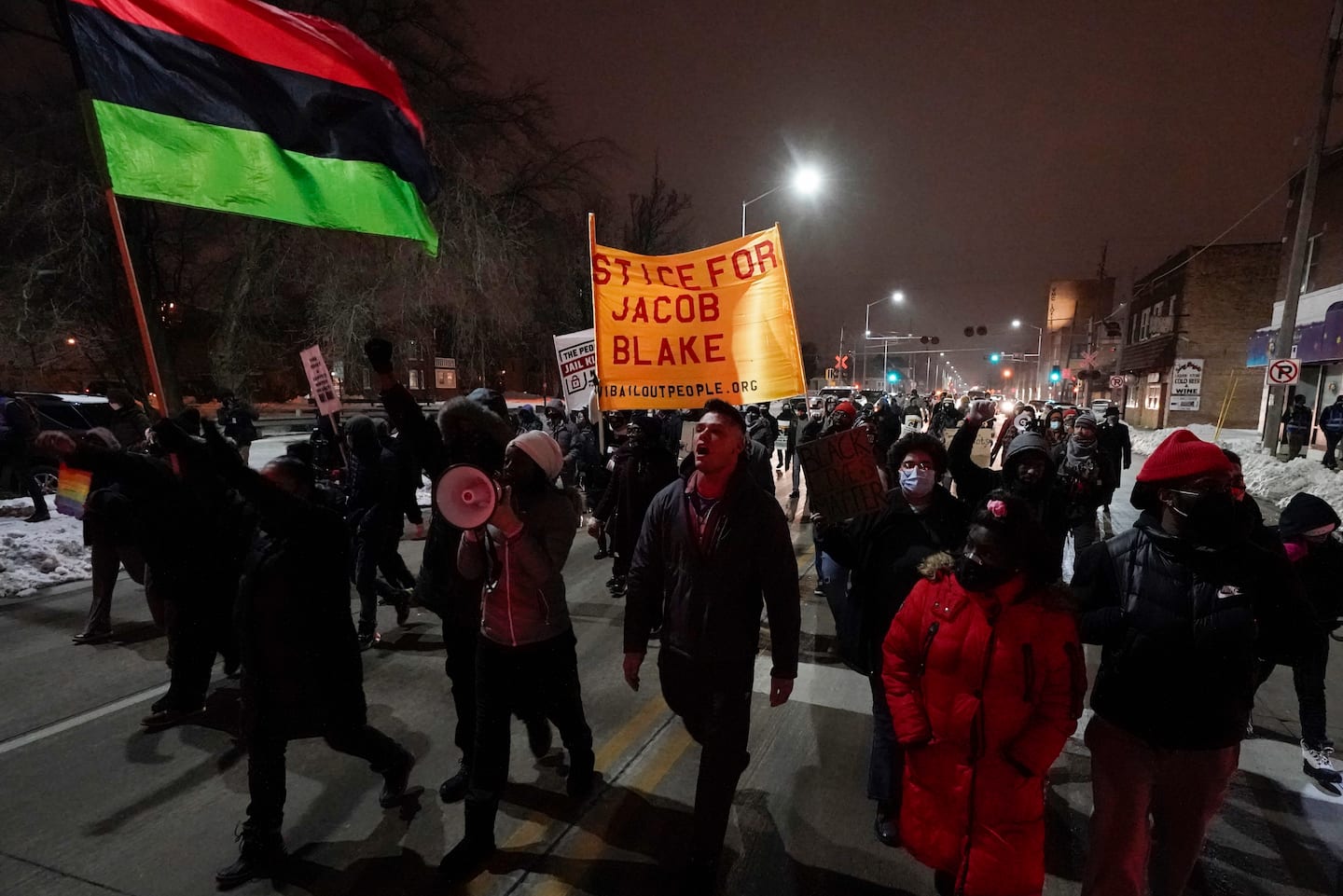Seven shots. Point-blank range. No charges.

Compared with those men, Blake is lucky. He survived his police violence. But Blake, who was shot in his back and sides, is paralyzed from the waist down and probably will never walk again.
According to the prosecutor, that’s basically Blake’s own fault. At his news conference, the district attorney was in full “blame the victim” mode. One could be forgiven for thinking that Blake was the person under investigation, rather than Rusten Sheskey, the White officer who did the shooting.
Here’s how the prosecutor summarized his findings: Blake had an outstanding arrest warrant for domestic violence. When he showed up at the home of the mother of his children, she called 911, claiming he was taking her car without her consent. When Sheskey and two other officers tried to arrest Blake, he struggled with them and walked toward the car, which the cops interpreted as resisting arrest. Two officers fired their Tasers, but Blake still managed to make it to the car, with Sheskey in hot pursuit. At the driver’s side door, Blake allegedly turned toward Sheskey with a knife. That’s when Sheskey shot him, at virtual point-blank range, seven times.
That’s the story Sheskey told three days after the event, in an interview with investigators, where he was accompanied by two lawyers and a police union representative. But in the immediate aftermath of the shooting, there had been no public mention of a knife. Sheskey first claimed that he tried to kill Blake because he was concerned that Blake would lead the cops on a high-speed chase, with three children in the back seat. This made no sense: If Sheskey was so concerned about the children’s welfare, why would he fire seven bullets with them literally inches away?
Focusing on the knife — and Blake’s prior domestic violence charges — the district attorney concluded that Sheskey acted in self-defense. Because he reasonably feared for his life, he was entitled to use deadly force — even seven bullets, if that’s how much it took to extinguish the threat.
But it’s hard to claim self-defense when you shoot someone in the back. Moreover, officers are trained, if they think someone has a weapon, to conceal themselves to avoid being hurt. You don’t knowingly expose yourself to deadly force and then use that as an excuse to kill the person who is threatening you. This is probably why the other two cops on the scene initially stayed away from the car. It’s also revealing that both these other officers had their weapons aimed at Blake, but neither of them fired. If they had detected an actual deadly threat, they would have fired as well.
Sheskey’s story isn’t credible to the Blake family, some witnesses or Kenosha activists. But he persuaded the only person he needed to, the district attorney.
The prosecutor’s charging options for Sheskey ranged from attempted murder to misdemeanor battery. I think the appropriate crime would have been reckless endangerment, which in Wisconsin requires proof of conduct that demonstrates disregard for human life and carries a sentence of 12.5 years.
It would not have been an easy case, but better for a jury to resolve the credibility issues than the district attorney, who works with these same officers he declined to prosecute. This case is an example of why there needs to be an independent counsel in officer-involved shootings to make the decision about filing charges.
Yes, Blake is an imperfect victim. Often people who survive criminal conduct have their own baggage. It’s a familiar problem for prosecutors. They could explain to the jury that Blake’s past criminal infractions, and even the fact that he had a knife, which is legal in Wisconsin, didn’t give police carte blanche to shoot him.
Breonna Taylor was a perfect victim. She was an EMT first responder, not a suspect in any crime and unarmed when the Louisville police gunned her down. It didn’t matter. Her killers are not being prosecuted for her death either.
For all the attention police brutality has received in the past few years, police haven’t reduced their use of deadly force. According to The Post, between 2015-2019, U.S. officers killed approximately 1,000 people per year. In 2020, the year of the national reckoning on race, the police killed 994 people.
The message from the district attorney is that what happened to Blake is not a crime. It’s a prosecutorial way of saying Black lives don’t matter.
Read more:






